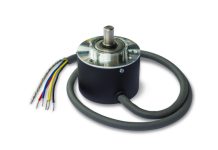When 4G technology was adopted in 2008, smartphone apps, streaming services and high speed internet access on-the-go became the norm. Regardless, there was little wireless advancement within production line factories and this is where a lot of ‘Big Data’ is produced. Sensor data and controls engineering is such a critical operation that it is never deemed safe to replace traditional 4-20mA and 0-10V signals. Wireless data has always been prone to interference from wide range of resources let alone being reliable for low latency and determinism needed for controls engineering application.
Hallmarks of 5G for industrial integration
Latency, determinism and reliability are the fundamental requirements for control systems within production lines. For instance, in a closed loop control – motion of a 10-tonne press machine could have been controlled by a feedback from vision detection camera. Feedback might have been monitoring human detection or ensuring machine is properly aligned for the press machine. Without latency and determinism, catastrophic consequences are inevitable. In 5G, these paramaters are enhanced to enable real-time monitoring and control of dense concentrations of devices communicating concurrently.
5G standard specifications
The three essential technology enhancements embodied in the 5G standard specification required for controls engineering are :
• Ultra-Reliable Low Latency Communication (URLLC) for real time-control systems.
• Enhanced Mobile Broadband (eMBB) to support new bandwidth-dependent use cases including augmented and virtual reality.
• Enhanced/massive Machine Type Communications (eMTC) for low-power, wide-area wireless networking.
These features make 5G capable of achieving real determinism required for controls engineering application.
Near-Future Integration of 5G for production lines
A production line could be a complete independent factory that produces full size car within its premises. It could be made up of over half a million nodes whereby node could be anything from temperature sensor to a six-axis delta robot. It is going to be a slow adaptation to integrate 5G and connect nodes and validate adequate determinism.
There is also an attitude factor as the managers are reluctant to replace wired systems which are perceived as guaranteed solutions to achieve safe machines. New modern nodes still seem to be coming in to the market with the option for 4 – 20 mA signal. In the future, it is expected that Autonomous Guided Vehicles AGVs are going to be amongst the first nodes to adopt 5G receiving large bandwidth data from multiple vision cameras and LiDAR scanners.
Evolution of industrial networking
Secure ethernet communication protocols such as Profinet and Ethernet/IP has existed for some time. There is more focus on achieving Time-Sensitive Networking TSN ethernet network as opposed to fully wireless network for 5G. Once the nodes are connected via TSN ethernet, a 5G router could be plugged in to achieve the benefits of 5G. Integrating 5G does not necessarily require cellular connection, private network could be achieved using a suitable 5G router with the likes of Phoenix Contact TC 5G PRIVNET Router. This 5G Router from Phoenix Contact focuses on stand-alone (SA) networks. This is the description for a 100% 5G based infrastructure. The opposite is non-stand-alone (NS), which requires a 4G and a 5G network to operate devices. When 5G SA network is set up for private mode (also called campus network) then, the industrial applications such as AGVs, robots, sensor concentrators etc. could be easily networked.
TSN ethernet integration requires both nodes and networking switch to be TSN compatible. It might as well mean having TSN ASIC built within nodes for easy networking with the switches. A suitable IC is fido5000 from Analog Devices, Inc. (ADI).

Easybodge is currently carrying out numerous R&D activities to integrate wireless capabilities for production lines. If you wish to benefit from secure TSN Ethernet and ensure your systems are 5G-ready then I might be able to assist. Please let me know your requirements and I would get in touch shortly.
















